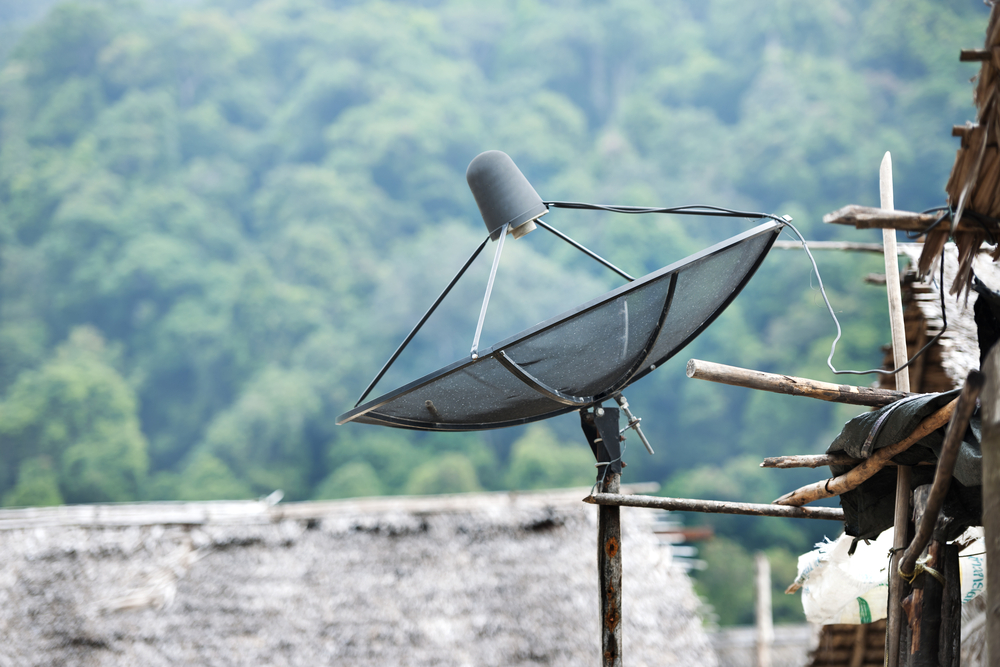
Before the pandemic, global inequalities in access to the internet were already abundantly clear. Almost half of households globally still have no access to the internet, according to UNESCO. But, as much of the global economy moved online, the pandemic revealed just how inadequate internet access is in many parts of the developed and developing world.
Advancements in technology have rapidly accelerated global digitalisation. The number of people with internet access has more than doubled over the past decade, according to the World Economic Forum.
But, over the past few years, growth rates in digital adoption have begun to plateau. Worldwide, active mobile broadband subscriptions grew just 8% in 2019, compared with 12% in 2018 and 22% in 2017. In 2020, growth rates are set to plunge even further, with just 2.2% growth in subscriptions in the first half of the year, per data from the International Telecommunications Union (ITU).
This slowing growth rate reflects a degree of “natural saturation”, says Martin Schaaper, senior ICT analyst at ITU, but the pandemic has limited access to what infrastructure is available and made it harder to build new capacity.
“People that used to have internet access at their place of work may be cut off now, especially in developing countries,” he says. “There were also the lockdowns and difficulty putting up [new infrastructure].”
Covid-19 has also revealed shortcomings in the way much of the world accesses the internet. Smartphones have brought billions of people online for the first time. But, while a mobile device is sufficient to browse social media and make payments, it is inadequate for more demanding activities such as videoconferencing.
And while mobile broadband subscriptions have soared over the past decade, with more than one phone subscription per person globally, growth in more reliable fixed broadband has been a lot more modest.
Households need access to broadband speeds of at least 30mbps, according to a report by Boston Consulting Group. Only half of the 51% of the world’s population connected via fixed broadband have speeds that surpass this, it finds, and while a further 26% of global households can reach these speeds via mobile coverage, these networks are often compromised by heavy usage.
“There are significant gaps between countries in terms of access to the internet, and specifically access to a broadband connection,” says Bhaskar Chakravorti, dean of global business at The Fletcher School at Tufts University. “This has become essential [during the pandemic] for work and school where you need a certain degree of quality in internet connection.”
Digital divides within countries, for example between urban and rural populations, are more pronounced in developing countries. “In developing countries, fixed broadband is usually very, very small, certainly outside urban areas, [whereas] developed countries have more complete national coverage,” he says.
“So that’s why you see different trends in fixed broadband, because the pandemic probably has hurt developing countries more than developed countries, certainly in affordability.”
The poor quality of internet access in developing countries means their economies have been hit especially hard by lockdowns. This is one reason why developing and emerging economies are not expected to return to 2019 levels of output before 2022.
But there are also inequalities in quality of access in much of the developed world, says Chakravorti. A study by comparison website BroadBandNow estimated that 42 million US citizens lack access to broadband, significantly higher than the Federal Communication Commission’s estimate of 21 million.
“There is a lack of awareness of how bad internet connectivity is in a highly advanced country like the US, [so] just imagine what it’s like in the rest of the world,” says Chakravorti. In the US, he adds, digital inequalities run counter to the urban-rural divide seen in the developing world: three times as many Americans in urban areas lack access to broadband compared with rural households.
A report by Digital Planet found that families in the US have had to drive children to the parking lots of Taco Bell to piggyback on the free Wi-Fi. While in developing countries like India, parents have had to choose between using a shared family phone for work or to access children’s schooling over WhatsApp.
The policy response
Previously, these shortcomings in digital infrastructure often went ignored and unmeasured, but Covid-19 is pushing them to the top of the policy agenda. Internet access is now recognised as a necessity, “like access to electricity or clean water”, which will spur action to address the enduring digital divide, says Chakravorti.
“In the ‘digital south’, much of the momentum has come through greater access to mobile phones and greater access to social media platforms such as Facebook and messaging platforms like WhatsApp,” he says. “[But] it’s not enough just to have access to the internet. Now all of these countries need to make more investments in their overall digital infrastructure.”
But while Covid-19 has created tailwinds for digitalisation, there will be a lag before we see the impact on the global digital divide, adds Schaaper. “Indeed, there will be pressure to roll out networks where they didn’t exist before,” he says. “[But], it’s not something that you can put up in a week.”






